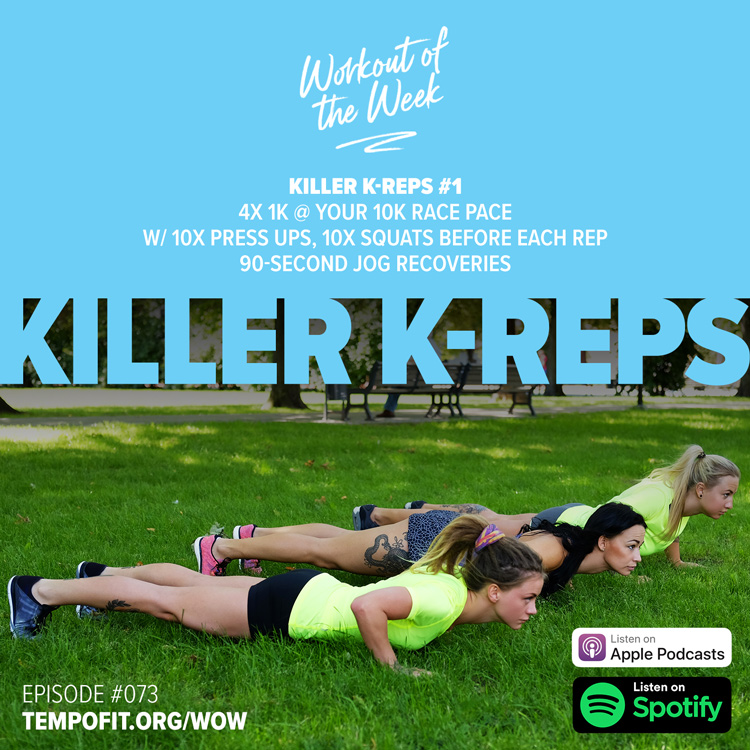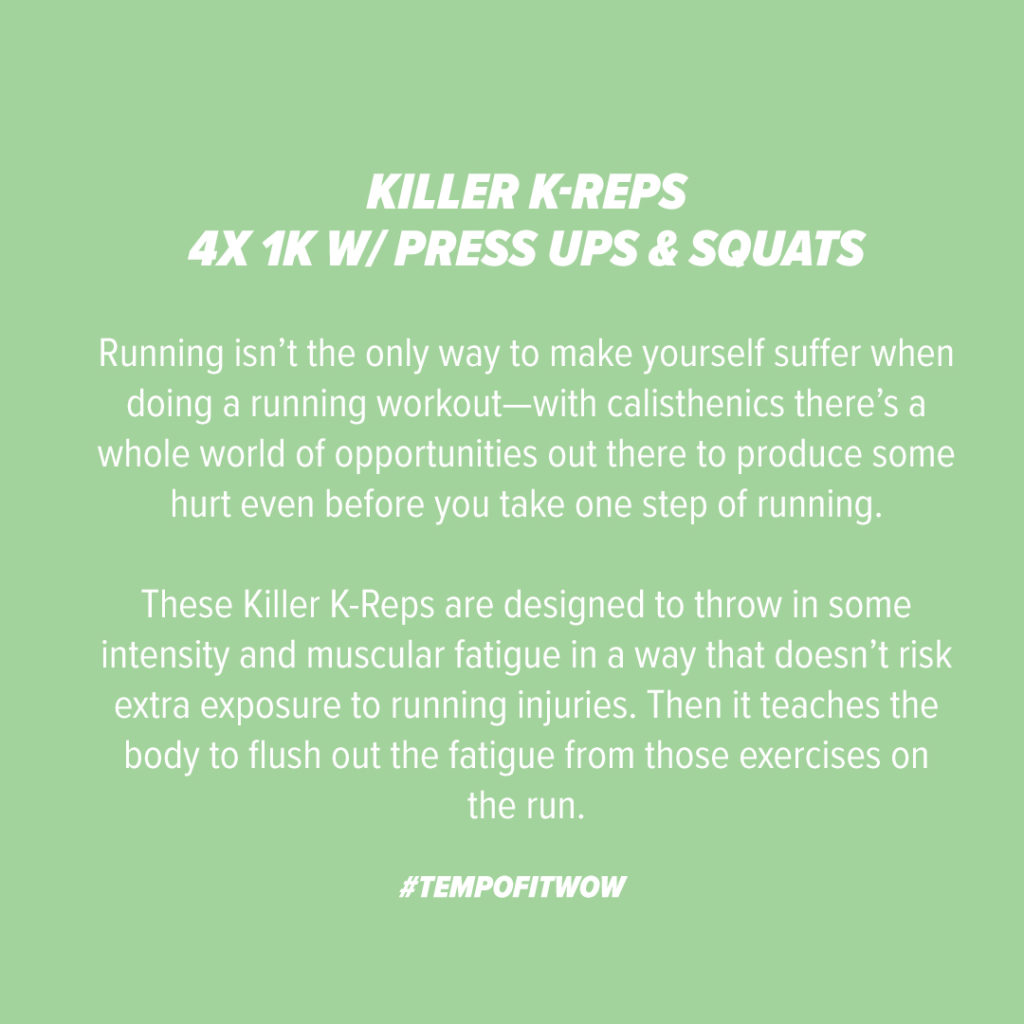
You will hate me by the end of this workout series! Ladies and gentleman … welcome to The Killer K-Reps!! They’re K reps but not as we know them.
WHAT?
Killer K-Reps #1
5x 1k @ Your 10k Race Pace
w/ 10 press ups & 10 squats immediately before each rep
90 seconds active/jog recovery after each rep
Terrain: Flat, measurable pathway.
Feels: Killer K-Reps
Running isn’t the only way to make yourself suffer when doing a running workout—with calisthenics there’s a whole world of opportunities out there to produce some hurt even before you take one step of running.
These Killer K-Reps are designed to throw in some intensity and muscular fatigue in a way that doesn’t risk extra exposure to running injuries. Then it teaches the body to flush out the fatigue from those exercises on the run.
WHY?
Body weight exercises are great for runners to build that core, hip and leg strength that comes into its own in the back half of a running race or the tough stages in a long run. They help build that general athleticism that we all need to run faster for longer.
We using the body weight exercises in the Killer K-Rep series to A) build that strength and athleticism, and B) to also teach the body to flush out fatigue on the run, without actually having to run all the fast.
HOW?
- Relax on the run. In the first 300m of each 1k rep, you’ll feel like it’s more like 3 or 5k race pace, but this is just your body adjusting to the fatigue and intensity that you’ve created with the press ups and squats. It will pass as you relax and settle in to your steady state 10k pace rhythm.
- Press Ups. If you can’t do 30-40 strict press ups with good form in one setting, I’d suggest you either do the press ups from your knees or while standing leaning against a wall. We’re after 10 press ups with good form and your chest touching the ground each time.
- Squats. If you are ever to hire a personal trainer, do it in order to perfect your squat technique (and while you’re there, do your deadlift and hip thrust as well). Squating well is one of the best things you can for your running longevity (and performance), general fitness and health. And here are a couple of quick tips:
- Feet shoulder width apart (or just wider)
- Toes and knees in line
- Knees not going beyond toes
- Butt going backwards (as though you’re plonking it on a small seat) to avoid making it a quad-dominant movement
- Neutral spine position (avoid rounding out your lower back)
- Weight through your heels (not toes)
- Squeeze your glutes (particularly at the bottom and when locking out your hips at the top)
- If you have the flexibility, aim for below parallel (butt getting just lower than knees)

Podcast (workout-of-the-week): Play in new window | Download
Subscribe: Apple Podcasts | RSS | More



